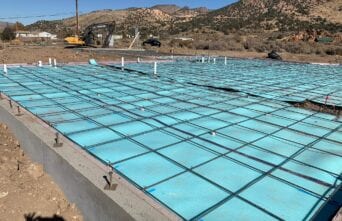Pellet Stove FAQ’s: Reduce, Recycle and Enjoy!

We’ve had a pellet stove in our home for over 20 years. It never ceases to amaze me how these incredibly efficient, cost effective, and green sources of heat are still a mystery to so many people.
Wood pellet stoves are generally small, and the 40 lb. bags of pellets are about the size of a bag of dog food, making them easy to purchase and store. Bags can easily be found around town and buying a few at a time does not significantly increase the cost; minimizing storage space throughout the winter. Pellet stoves also easy to operate. They only require loading pellets and igniting the flame. Our 2014 stove lights with a press of a button and the flame can be adjusted with a remote thermostat that will adjust the heat up or down depending on the ambient air temperature. The average stove needs to be loaded only once a day. (HowStuffWorks) Cleaning is also very simple. A small collection box can be emptied when a new bag is loaded. The ash is about a cup full. We vacuum out the ash box and inside of the burn chamber with our household vacuum and wipe down the glass when we reload a bag of pellets.
Because of the high efficiency of our Haven™ design, a bag of pellets that costs on average $4.50, will last about 2-3 days, depending on the outside air temperature. We’ve been using our pellet stove as our sole source of heat. With 3-6 hrs of operation a day, this efficient heat source has been keeping our average temperatures inside in the mid 60’s when the outside temperature dips below freezing nightly.
A good rule-of-thumb when selecting the right size stove for your home is that a stove rated at 60,000 British Thermal Units (Btu) can heat a 2,000-square-foot home, while a stove rated at 42,000 Btu can heat a 1,300-square-foot space. The stove we selected for our 1600 sf. Haven™ is the smaller Heat Tech GMI 26 stove from Dan The Stove Man in Sparks, NV.
Why are pellet stoves clean, green and highly sustainable?
Pellets are made of highly compressed wood waste, or “re-purposed” material. Because of their compact design, they put out a lot of energy in every little nugget. Pellet stoves burn fuel so completely that very little creosote builds up in the flue, posing less of a fire hazard. Pellet flue pipe doesn’t require cleaning as often as a wood flue pipe. In addition, a smaller diameter and SHORTER pipe can be used, reducing the initial cost of installation. Pellet stoves can be directly vented out the back wall. Wood stoves must go up and out the roof.
EPA-certified wood-burning stoves are tightly regulated, releasing between 2 – 7.5 grams of smoke into the air every hour— an improvement over those of the olden days that emitted 40+ grams. Pellet stoves emit almost no smoke; less than 1 gram per hour. According to the Biomass Energy Centre in the UK, when burned, wood releases 0.00612 pounds per kilowatt-hour of CO2. Pellets release 0.035 pounds of CO2 per kilowatt-hour. (http://ow.ly/IwvLx )
Traditional fireplaces draw in as much as 300 cubic feet per minute of heated room air for combustion, then send it straight up the chimney. Pellet stoves use a convection blower; room air is circulated through the heat exchangers and directed into the living space. (Wikipedia)
There is a down side to pellet stoves. They take a very small amount of electricity to run the little auger that feeds the pellets to the flame. Under normal usage, they consume about 100 kilowatt-hours (kWh) per month. (Energy.gov) If you’re grid tied and in a cold weather climate that loses power for long periods of time, you will have to have a back up generator or batteries. Some pellet stoves can be purchased with battery backup.
In our next post, we’ll share information about how you can save up to $1200 in Washoe County Nevada when you trade in an old wood stove for a new pellet stove.
Do you have experience living with a pellet stove? We look forward to your comments or questions. Please share this blog with other sustainability minded folks.



